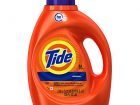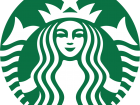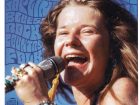There's nothing like a few blog posts on music and radio to elicit some interesting responses from those who've stopped by The Digital Tavern. For those of you tuning in, here is my first radio inspired post and here's the second.
While it's no secret that the state of radio is deteriorated over the last decade. Much of the angst, aggression and blame from nay sayers is aimed at Clear Channel, who has chalked up more radio station acquisitions in the last six years than Shaq has rebounds. And with its massive appetite, Clear Channel has virtually and single-handedly turned commercial radio into a homogeneous bland mixture of music and mush that represents largely what's wrong with the music industry and mass media today. Harsh and strong words? You betcha. Are there exceptions to this rule? Sure. But for how long?
Keep in mind that even though the Telecommunications Act of 1996 allowed for the consolidation of radio that has led to its current fate, the legislation does require station owners to serve its local audiences. Thereby preventing Clear Channel from doing what it'd like to do: serve each of its 1400 stations with a single syndicated feed 24/7. Think of the $$$ they'd save on DJ's alone! So when I followed Scott Rosenberg's pointer to David Gallagher's piece in Monday's New York Times, I couldn't resist another poke at the Clear Channel megalopoly.
One of Clear Channel's subsidiaries is responsible for the syndicated countdown program “Carson Daly's Most Requested.” Daly's producers work hard to simulate the effect that he is actually playing requests from and speaking to the local market where the program is aired. Fact is, Carson is a robot. That is, he's merely the manifestation of Clear Channel's technologists. Scott, explains the technology perhaps more eloquently than Gallagher:
[…] this radio mega-conglomerate has assembled a DJ from database parts. Basically, they've taken the recorded voice of Carson Daly, chopped it into little snippets and used those soundbites to re-assemble pseudo-local broadcasts — so that listeners in, say, Atlanta hear a localized “top 40” broadcast, with Daly introducing each song in the particular order that applies to that market, yet Daly never actually said those words in that order. […]
Don't get me wrong, I'm the first one to acknowledge and applaud advances in technology. For years, I've been an addictive early adopter. And this technology is slick. However, when used at the naiveté and expense of “local listeners”, it's time to call foul play.
[…] It's hard to know whether to applaud the ingenuity required to create such a DJ-bot, or barf at the complete triumph of corporate homogenization that it represents. I think the gagging in my throat tells me which reaction predominates for me. […] Scott Rosenberg
It's perfect. You can see the next phase. Simply by creating a database of phrases, vowel and consonant sounds, expressions, inflection patterns and through the use of a sophisticated voice modeling algorithm, Clear Channel will avoid forever the problems of emotional, idiosyncratic and wage and salary earning DJs. Plus, with the punch of a few buttons or simple web interface, programming changes can be made country wide. All from the comfort of Clear Channel's programming offices.
While I'm sure the labor unions have an issue with the likelihood of DJ jobs lost to Clear Channel's innovation, my issue is with the thousands of great artists whose songs will never have a remote chance of airplay. And while in my previous post(s) on radio and music, I suggested that perhaps the next millennium “underground radio” movement would take place on the internet. Even this possibility is in grave jeopardy by the efforts of the RIAA and its members.
Speaking in the LA Times this week, Janis Ian shows that “big media business” isn't always in favor of “new and innovative” technology. Her editorial begs industry “Don't Sever A High Tech Lifeline for Musicians.” [via Doc via Archipelago]



